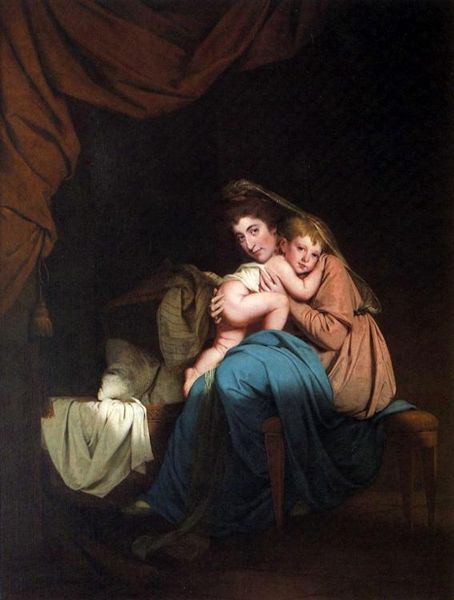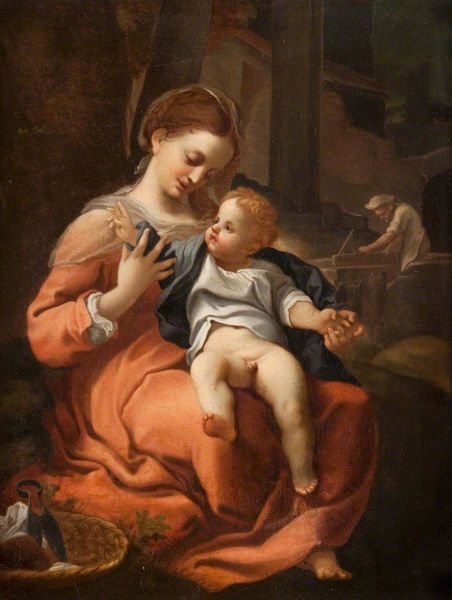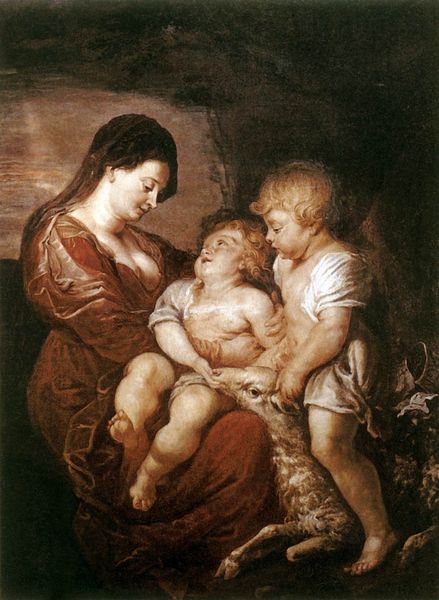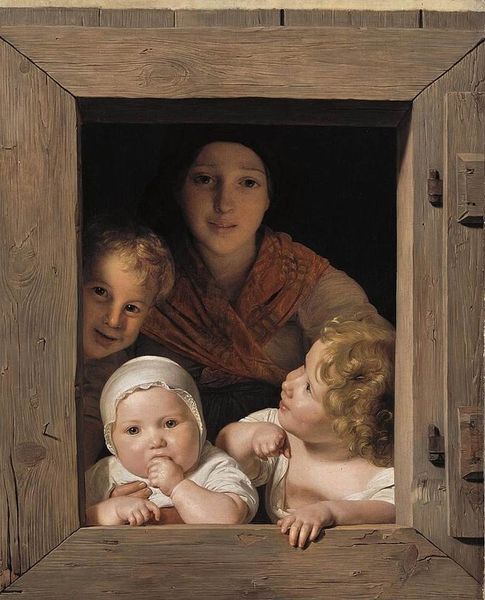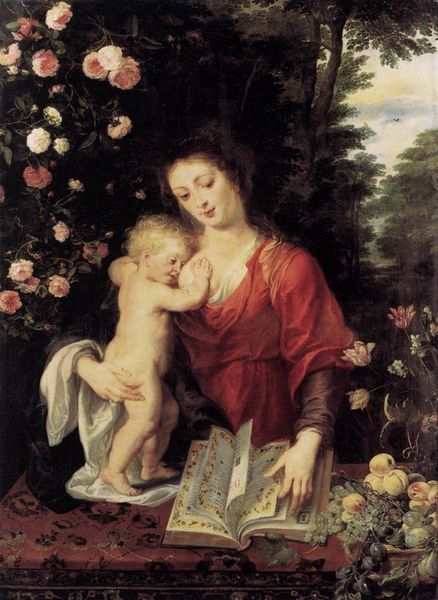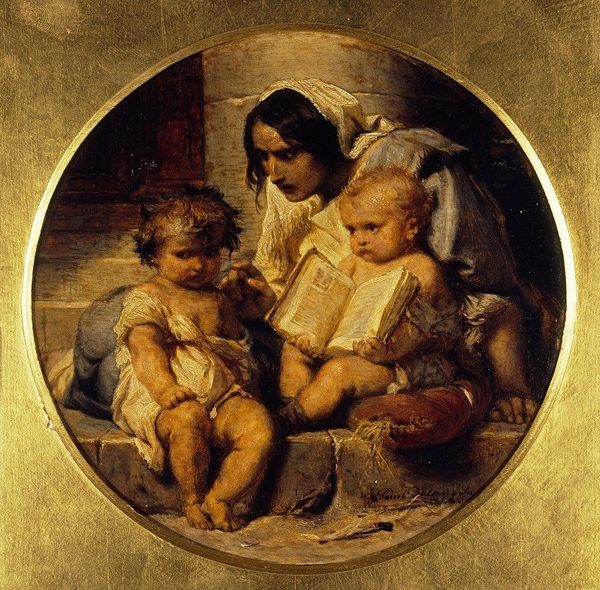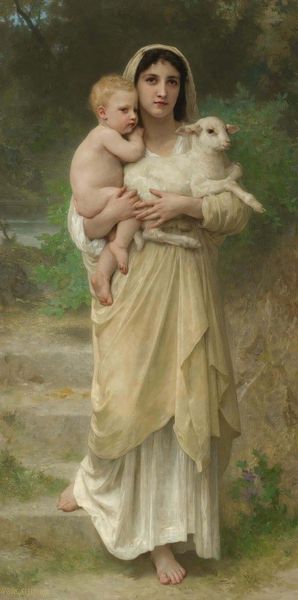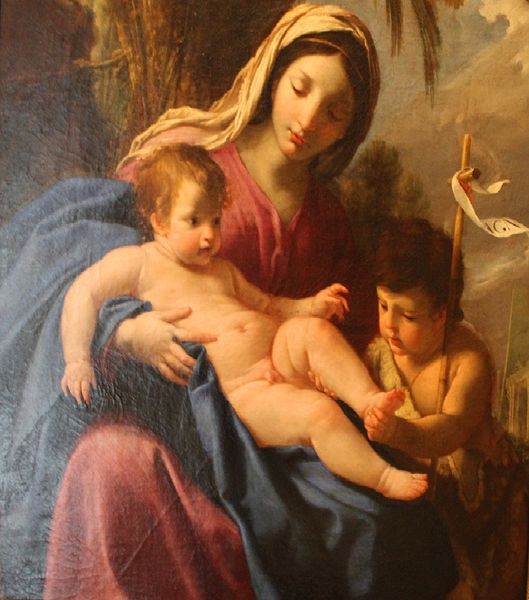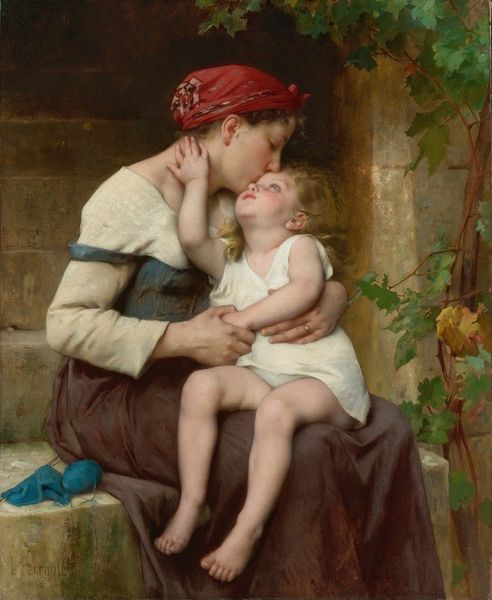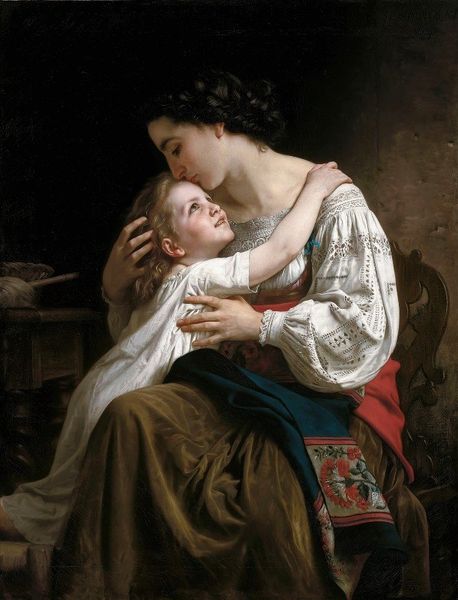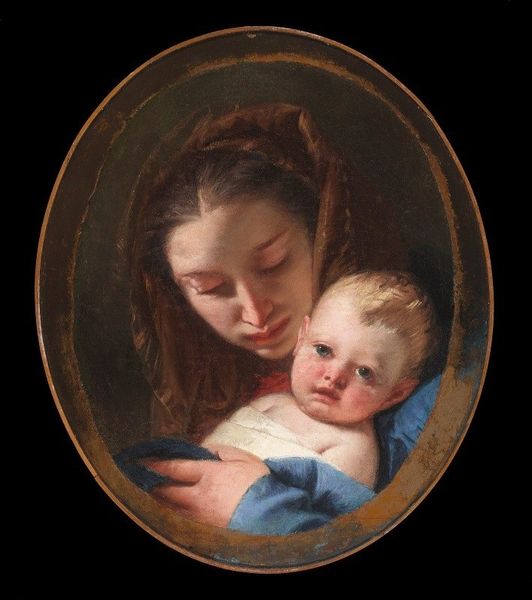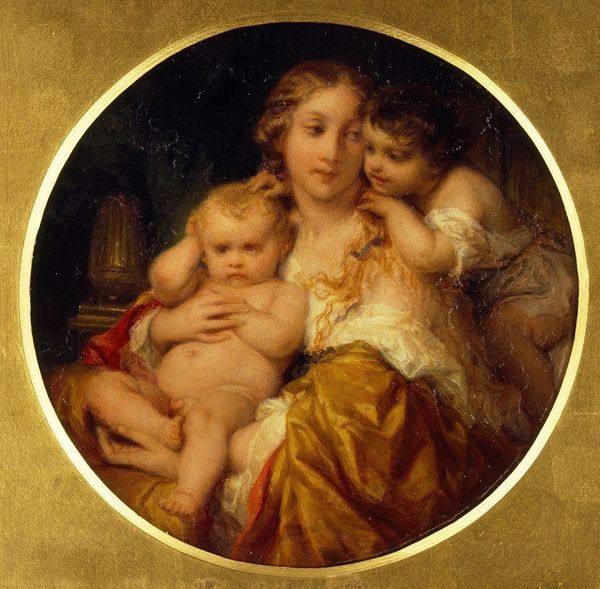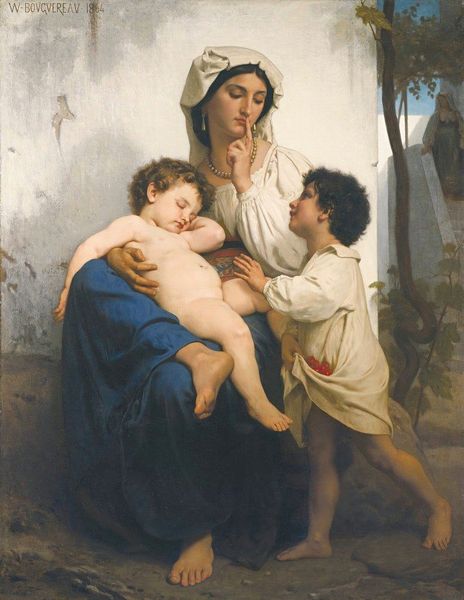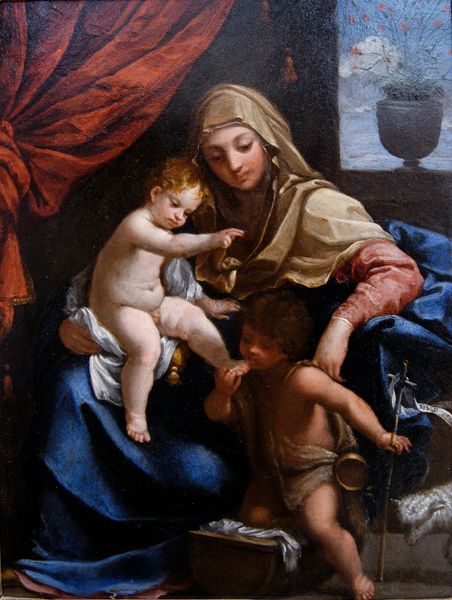
Copyright: Public domain
Curator: Today, we’re looking at Giuseppe Mazzolini’s "Mother and Child at a Window," painted in 1872. Editor: It's… overwhelmingly domestic. I am immediately drawn to the roughness of the stone juxtaposed with the soft, idealized skin tones of the mother and child. Curator: That's a key tension Mazzolini explores. The image comes out of the tradition of Academic Art, which valorized both sentimental scenes and classical form, creating images meant to uplift public morality and social norms regarding the family. Editor: I can definitely see the high level of skill on display here. But I’m also interested in the materiality, that stark contrast of coarse stone and verdant foliage to really make their tender embrace… almost too sweet? I can feel that they’re trapped somehow, framed by this stone. What would painting like this mean at that time? Curator: Think of it in the context of Italian unification. Mazzolini is making a subtle point about national identity centered on domesticity. This tender maternal scene presented as both eternal and definitively Italian, set against what looks like some sort of ancient well or structure. Family as the bedrock of national virtue. Editor: The means of production also tell a story. It is a constructed image. See how meticulously the fabrics are rendered, from the white kerchief to the almost too-bright red sleeves. The whole scene is carefully arranged; it's not capturing any sort of “real” moment, the whole idea seems designed to generate an ideal! It’s very heavy with the cultural implications, what’s missing perhaps are all the working-class women who don't have time to sit with their babies near what appears to be an unused decorative fountain. Curator: Precisely. By elevating a specific image of motherhood, others are marginalized. What Mazzolini crafts as natural is, in fact, deeply constructed through academic conventions of the era. The “window” they’re set within also has a long, often patriarchal, history in art as a space where a mother and/or her daughter dream and wait for some kind of action to befall them; where do we locate the social possibilities? Editor: That idea, of a passive role that the model has. Yes. Seeing beyond just the surface sentiment, tracing how Mazzolini's craft reproduces social expectations gives me so much more to consider! Curator: Indeed. And those constructed, curated images were tools, weren’t they? Thanks for illuminating that so clearly. Editor: The pleasure was all mine! This artwork makes one consider how constructed and highly skilled craft has the means of perpetuating or even resisting societal structures.
Comments
No comments
Be the first to comment and join the conversation on the ultimate creative platform.
